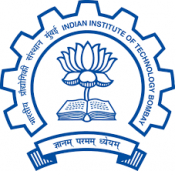
Project 10.1 (2019)
Background
In terms of road inspection methods, traditional techniques such as coring and drilling are destructive based, which are generally expensive, time-consuming and slightly significant, since the information gathered cannot be extended to long-range distances. In contrast, several non-destructive testing or evaluation (NDT/NDE) techniques have been developed to enable more efficient assessments of road pavements and materials, featuring high-speed data acquisition, cost-effectiveness, and the capability to be performed in-situ over longer distances.
In particular, ground penetrating radar (GPR) based on the transmission and reception of short electromagnetic (EM) impulses is nowadays established as one of the most effective and powerful tools, due to its high flexibility of usage and reliability of results. The main applications of GPR include the evaluation of layer thicknesses, the assessment of damage conditions in hot-mix asphalt (HMA) layers, load-bearing layers and subgrade soils, and the inspection of concrete structures.
However, current studies based on one air- or ground-coupled GPR system mainly focuses on the calculation of material dielectric constant for pavement thickness measurement, which may only be valid for newly built flexible pavements with the assumption that the dielectric property through depth is uniform. As a result, it cannot provide reliable information for the whole layer and the estimation error may increase when the asphalt mixture ages or when the asphalt layer is made of multiple lifts. Enhanced GPR technology is therefore necessary to provide more accurate pavement thickness measurement and condition assessment, based on which the pavement life estimate can be achieved.
Project Objectives
1. To conduct a comprehensive literature review of the application of GPR technology for pavement thickness and condition assessment.
2. To develop a robust algorithm for precise pavement thickness measurement through lab and field testing
3. To develop advanced signal processing methods for cost-effective data analysis.
4. To undertake electromagnetic numerical modelling to facilitate pavement life estimation.
5. To integrate with other technologies for comprehensive evaluation of pavement condition, e.g. crack and debonding.
- Dr Ye Lu (LCI - Monash University)
- Professor Wing Chiu (Monash University)
- Professor Jayantha Kodikara (Monash University)






































